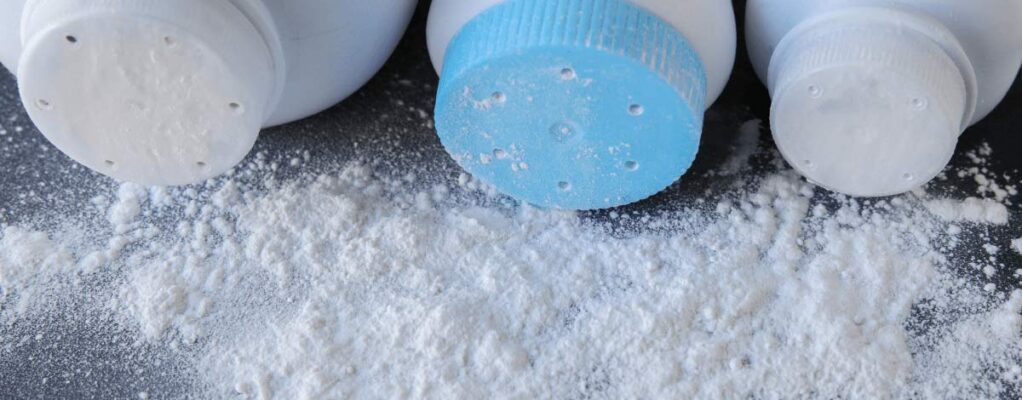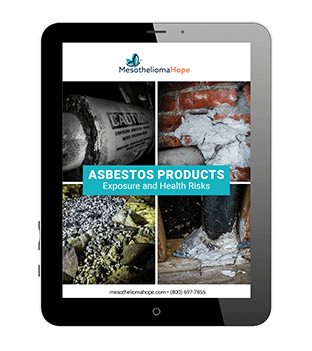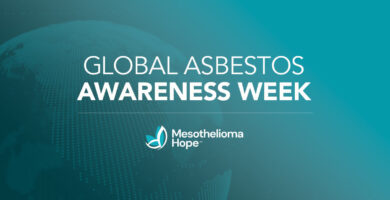Two minerals that have become associated with certain forms of cancer are asbestos and talc. Although they sometimes are discussed together, asbestos and talc are two different substances.
What Is Asbestos?
Asbestos is a naturally occurring mineral that has the potential to cause cancer. Prolonged exposure to asbestos, particularly from breathing in tiny particles of asbestos dust, can cause serious and long-term illnesses such as asbestosis and mesothelioma.
After decades of research, mesothelioma is known to have only one confirmed cause: repeated exposure to asbestos.
Originally considered a miracle product because of its resistance to fire, asbestos was used across a multitude of industries prior to its internationally established link to cancer, such as construction, oil refining, shipbuilding, and electrical and plumbing services.
Many U.S. military sites also have an extensive history of asbestos use, which eventually impacted the health of many veterans and their families.
What Is Talc?
Much like asbestos, talc is an organic mineral containing magnesium, oxygen, and silicon.
For decades, talc was a common ingredient in popular household products, such as aftershave powder, baby powder, and makeup.
Talc has a natural tendency to absorb moisture, so including it in these products initially seemed like an affordable and practical way to remove excess moisture from the skin.
Similar to asbestos, there are several at-risk occupations where employees are frequently exposed to talc. These jobs involved working in construction, factories, and mines.
Does All Talc Contain Asbestos?
You may be wondering, “Does talc contain asbestos?” Not all talc or talcum powder products contain asbestos. Some products may claim to contain asbestos-free talc, while others may have trace amounts of asbestos in talcum powder.
In cases where consumers have developed cancer after years of using asbestos-laced talc products, it is most likely the asbestos and not the talcum powder that caused the cancer.
In fact, the latest research on talc and lung cancer suggests that there is no strong link between using talc-based products and developing lung cancer.
However, research has shown that there may be a link between prolonged exposure to asbestos-laden talc products and long-term illnesses, such as lung cancer when inhaled and ovarian cancer when applied in close proximity to female reproductive organs.
Johnson & Johnson Baby Powder
Perhaps one of the most well-known cases surrounding talc and asbestos products is that of Johnson & Johnson baby powder.
Over the years, Johnson & Johnson has been named in nearly 30,000 lawsuits that link usage of its talc-based baby powder to the eventual development of cancer. The lawsuits specifically highlighted that the baby powder contained asbestos, which put consumers at risk for cancer.
Some of these consumers had developed mesothelioma after years of applying Johnson & Johnson baby powder on their skin and breathing in the asbestos in its fibers. Thousands of women also expressed that they had developed ovarian cancer after using this specific product.
In a 1985 interview with New York Magazine, Johnson & Johnson revealed that 70% of people who use the company’s baby powder are adults. Given that it can take 10-50 years to develop and notice symptoms of mesothelioma, it would make sense that the company would be inundated with these lawsuits decades after sharing this data.
According to several mainstream news media outlets throughout the summer of 2022, Johnson & Johnson claimed that it would end the production of its talc-based baby powder by 2023, aiming to replace the main ingredient with cornstarch.
Despite paying billions of dollars in lawsuits — and the thousands of people who have developed cancer after using the brand’s baby powder — the company continues to maintain that this product does not contain asbestos.
How to Know if Talc Is Asbestos-Free
You can read the labels or conduct research on products you are interested in using but are unsure about. However, the only completely accurate way to verify whether a specific talc-based product is asbestos-free is through scientific testing.
If the presence of asbestos is not explicitly disclosed, it is challenging to know for certain whether the product is safe to use without controlled lab tests and research.
Compensation for Asbestos-Related Illnesses
If you or your family have been diagnosed with an illness as a result of repeated exposure to asbestos in talc products, our Patient Advocates can help determine whether you qualify to file a lawsuit against the product manufacturers. Those who are eligible may be entitled to financial compensation.
The best asbestos lawyers will not charge anything to take your case. Instead, they will only get paid if you receive compensation from a lawsuit or asbestos trust fund claims.
Contact us or call (866) 608-8933 today for a free consultation.










